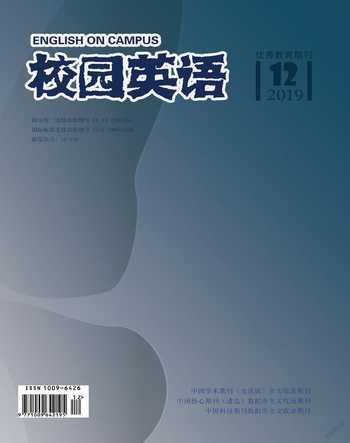Interpersonal Meaning of English Recruitment Advertisement
赵冰清 胡勍
【Abstract】The study aims to investigate the realization of interpersonal meaning of recruitment advertisements from the perspective of Systemic Functional Grammar. One function of recruitment advertisement is to establish a good relationship between recruiter and the potential applicants, which is realized by the resource of interpersonal meaning. In this study, the author explores how interpersonal meaning is realized through mood and modality system.
【Key words】recruitment advertisement; interpersonal meaning; systemic functional grammar
【作者簡介】赵冰清(1990.01-),女,汉族,山西忻州人,山西工商学院,助教,硕士,研究方向:语用学;胡勍(1988.07-),女,汉族,山西人,山西工商学院,硕士,讲师,研究方向:商务英语。
1. Introduction
Advertisements, as an important medium for the employers to recruits their ideal talents are of great significance. It reflects the interaction and negotiation between the two sides of participants. Thus it is important to analyze the discourse which helps applicants to precisely understand the implications of the employers and increase the rate of successes.
2. Methodology
At first the writer randomly collected five recruitment advertisements at the website www.monster.com. which is a premier global online job market, which advertises jobs for job seekers and helps the employers to get human resource.The writer carries out descriptive analysis in terms of mood and modality, and then analyzes the distribution and frequencies of modal expressions. Based on the data analysis, some of the characters of the recruitment advertisements are revealed.
3. Findings and discussion
In the recruitment advertisements, one of the speech roles is to give the information of company, vacant position, job duties and how to apply. The other is to demand the talents to take action to apply. The ensuing part will demonstrate how advertisers can realize the two basic roles in recruitment advertisement by use of Mood structure. According to the analysis, declarative mood structures and elliptical declarative structures are up to 96.3%, which take up a heavy proportion. It is similar to Pandya’s study (1977) and Huang Guowen’s study(2001). They are typically used to give information including the situation of companies, job duties and their requirements. As for demanding action to make talents to apply, only a few companies adopt imperative clauses. Most of them don’t ask it directly but describe the advantages to encourage employees to apply. This is also one reason why declarative mood structures are the main structures in recruitment advertisements. Another phenomenon is the frequent use of that elliptical declarative mood structures in it. They make the advertisements concise and valid so that potential employees could find the most appropriate job in a short time.
In written discourse, modality is a major exponent conveying interpersonal meaning. This study adopts Halliday’s two-fold division of modalization (probability, usuality) and modulation (obligation, inclination). (Halliday, 2000) In the collected data, probability takes up to 39.0%, the highest of these four modal expressions. The highest frequency of probability modalization improves the degree of the interaction and negotiation in job advertisements as to realize the persuasive function. Compared with probability, only sparse examples of modal expressions for usuality are identified in the advertisements. The reason for the low occurrences of usuality is that applicants usually concerns with whether the propositions in the recruitment advertisements are true or not. As for the obligation, which enjoys the second highest occurrence in these four types of modality, they are most often employed by the advertisers to present job requirements and conditions.
4. Conclusion
As the above analysis, English recruitment advertisements are mainly made up of declarative mood structures and elliptical declarative mood structures for the purpose of giving recruitment information and persuading talents to apply. They also incline to use probability to enhance interaction and negotiation with potential applicants. The qualifications and key responsibilities of talents the corporations demand are described by obligation.
References:
[1]Halliday, M. A. K. An introduction to functional grammar[M]. Beijing: Foreign Language Teaching And Research Press,2000.
[2]Huang, G. W. 黃国文.语篇分析的理论与实践——广告语篇研究[M].上海:上海外语教育出版社.
[3]Pandya, I. H. English language in advertising: A linguistic study of indian press advertising. Delhi, India: Ajanta Publications,1977.

